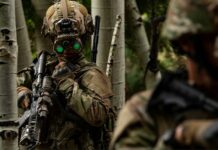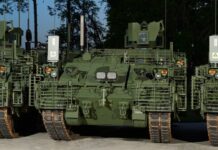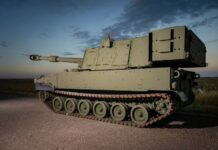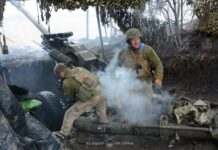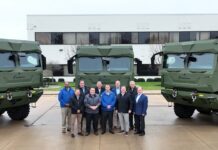The US Army’s Future Vertical Lift (FVL) programme aims to replace the current tactical vertical lift fleet with state-of-the-art systems endowed with reduced logistical footprint and enhanced:
- manoeuvrability
- range
- speed
- payload
- survivability
- reliability
Increased range and speed are intended to enhance survivability and permit missions to begin from beyond the reach of enemy long-range weapons, and to overcome the “tyranny of distance” which strains current vertical lift aircraft’s capabilities in far-flung operating zones.
The aspirational FVL family consists of the medium-weight Future Long-Range Assault Aircraft (FLRAA) and the Future Attack Reconnaissance Aircraft (FARA). According to Congressional testimony by Army Chief of Staff Gen. James McConville on 5 May 2022, the service continues to fund both FLRAA and FARA, and is “on track to have both systems begin fielding by Fiscal Year 2030.”
FLRAA
FLRAA is conceived as a transport utility platform optimised for:
- assault transport of airmobile forces
- Combat Search & Rescue
- Casualty Evacuation
- special operations missions
- general support missions
It will ultimately succeed the Army’s UH-60 BLACK HAWK and the US Marine Corps’ H-1 HUEY helicopters.
Two teams were selected in March 2020 to participate in the competitive demonstration and risk reduction (CD&RR) phase of the programme. In March 2021, they received awards to continue into CD&RR phase 2, which focusses on the risk reduction aspect. Both teams’ demonstrator aircraft feature notable performance advantages over the currently deployed helicopters, including circa twice the unrefueled operational range.
The Competitors
The Bell Helicopter Textron V-280 VALOR prototype is a clean-sheet design incorporating third-generation tiltrotor technology. The combination of carbon-fibre construction and triple-redundant fly-by-wire systems reduces aircraft weight and lightens aircrew workload. The aircraft achieved first flight in December 2017. Flight evaluation ended in June 2021 after more than 160 individual test flights, during which top speeds of 280 knots were reached. Bell stated that all goals of the demonstration phase had been achieved.
The Boeing–Sikorsky SB-1 DEFIANT X is a compound helicopter which utilises twin coaxial rotors for lift, and a rear-mounted pusher propellor to significantly increase speed over conventional helicopter designs. It is a variant of the original SB-1 demonstrator which first flew in 2019. Unlike the original, the DEFIANT X was specifically configured for the FLRAA competition. It achieved first flight in January 2022, reaching 236 knots. It has subsequently flown at nearly 250 knots.
Details of the Army’s Request for Proposals for a final design, which was presented to industry in July 2021, were not made public. Gen. McConville’s 5 May 2022 testimony included the assurance that the Army is “scheduled to down select FLRAA to a single vendor in the coming months.” Down-select to a single vendor could be delayed to “perhaps early first quarter [FY]23,” said Douglas Bush, US Army Assistant Secretary for acquisition, logistics and technology, during congressional testimony in late July 2022.
The engineering and manufacturing development (EMD) phase is expected to begin in October 2023. Barring delays, the critical design review would follow in early 2025. The first prototype would be due in mid-2025, with an additional five prototypes to be delivered through summer of 2026.
FARA
FARA will assume the role of the retired OH-58 KIOWA SCOUT reconnaissance helicopter. Additionally, the Army plans to replace approximately half of the AH-64 APACHE attack helicopter fleet (primarily the older “D” models) with FARA units. In addition to directly executing armed reconnaissance and strike missions, FARA will control unmanned reconnaissance and strike assets, and escort the FLRAA on aerial assault missions.
The FARA programme was initiated in April 2019 with design awards to five vendors. The Army chose to skip the CD&RR phase, and in March 2020 directly downselected to two competitors – Bell and a Lockheed Martin-Sikorsky team to design and develop operational prototypes. As required by the Army, both teams are using a Modular Open Systems Approach (MOSA) which will simplify maintenance and mission system upgrades during the aircraft’s operational life. Both aircraft display a compact design optimised for operations in tight environs including between buildings in urban settings. Both designs feature lateral weapons bays to permit internal carriage of air-to-ground weapons to optimise aerodynamics.
Competing Designs
The Bell 360 INVICTUS design utilises a single high-performance four-bladed main rotor system and an open tail rotor (originally Bell planned to use a ducted tail rotor but switched to the more conventional design in 2021). Lift-sharing wings are designed to assume 50 per cent of the lift effort once an airspeed of 180 knots is achieved. The operational prototype is between 80 and 90 per cent complete.
The Lockheed Martin–Sikorsky designed RAIDER X is the team’s competitive prototype for the FARA programme. It takes the same basic structural approach as Sikorsky’s FLRAA entry, with twin coaxial rotors and a rear-mounted pusher propeller. The firm presents this commonality as an asset which would simplify logistics and ease training, both for aircrews and maintenance personnel.
On 7 July 2022, Sikorsky announced that the prototype is 90 per cent complete. To date, the team continues to use the smaller RAIDER 97 (or S-97) as the technology demonstrator for the programme. These flight tests garner operationally relevant data points on vital aspects such as aerodynamics and manoeuvrability and continue to inform the ongoing RAIDER X design work, Sikorsky’s FARA programme chief engineer Pete Germanowski said July 2022. This is shortening the design phase by a year, he added.
The Army requires both teams to utilise the government-designed Improved Turbine Engine Programme (ITEP) turboshaft engine, which is being produced by General Electric as the GE T901-900. Testing delays, attributed in part to the Covid-19 pandemic, have pushed planned delivery of the engine to the design teams back to November 2022. Installing and ground-testing the engines on the operational prototypes is expected to take a year, which will delay major milestones of the FARA programme by at least that long.
The Request for Proposals for the Engineering and Manufacturing Development (EMD) phase has been moved up to the second quarter of FY 2023. The competitive flight test programme is now expected to begin during the first quarter of FY 2024 and run through early FY 2025. That programme phase will be followed by downselect to a single vendor who will receive the EMD contract in FY 2025. The weapon system capability design review for that vendor has advanced to the fourth quarter of FY 2026.
UK Allied Collaboration
Future exports to allied and partner nations have always been a foregone conclusion regarding FVL, especially given the large number of nations using the BLACK HAWK helicopters which FLRAA will replace. Going one step further, on 14 February 2022 the US and the UK signed a formal agreement to share technical information on the FVL programme. The FVL Co-operative Programme Feasibility Assessment agreement is intended to ensure full interoperability and integration of the two nations’ future rotary aircraft systems, according to a US Army statement. It will assess future collaboration opportunities for manned rotary aircraft development, testing, production and sustainment, and promote such cooperation. Additionally, the two nations plan to assess collaboration opportunities with regard to:
- unmanned aircraft
- air-launched effectors
- the implementation of open architecture systems
A similar agreement was signed with the Netherlands in July 2022. “We’ve seen the benefits for interoperability among our forces, especially in aviation,” said Douglas Bush. “By working closely on our future efforts, we garner the greatest possible strength for the long-term advance of our mutual interest.
The allies will also cooperate on developing future concepts of lower-tier air domain operations. “Today’s agreement formalises our cooperation to help determine the future direction of aviation in competition and conflict,” said Maj. Gen. James Bowder, Director of Futures, UK Army Command, who signed on behalf of the United Kingdom.
Mixed Force
While the Army plans to equip the first operational units with both the FLRAA and the FARA in 2030, it will take decades to complete the transition from legacy systems. Regarding FARA, a complete transition is not even planned. As Lt. Gen. James Richardson, head of the Army Futures Command, told the Senate Armed Services Committee in May 2022, FARA is considered more of a scout helicopter which will largely “complement” the APACHE.
In fact, the service continues to upgrade the current UH-60 and AH-64 families, extending their service well into the mid-century. Until the last legacy systems retire, the force will have a mix of units which can be deployed according to the operational requirements. This, and the continued acquisition of sophisticated tactical unmanned aircraft, will contribute to a more efficient management of the FVL units, reducing physical stress on the airframes and extending operational life.





